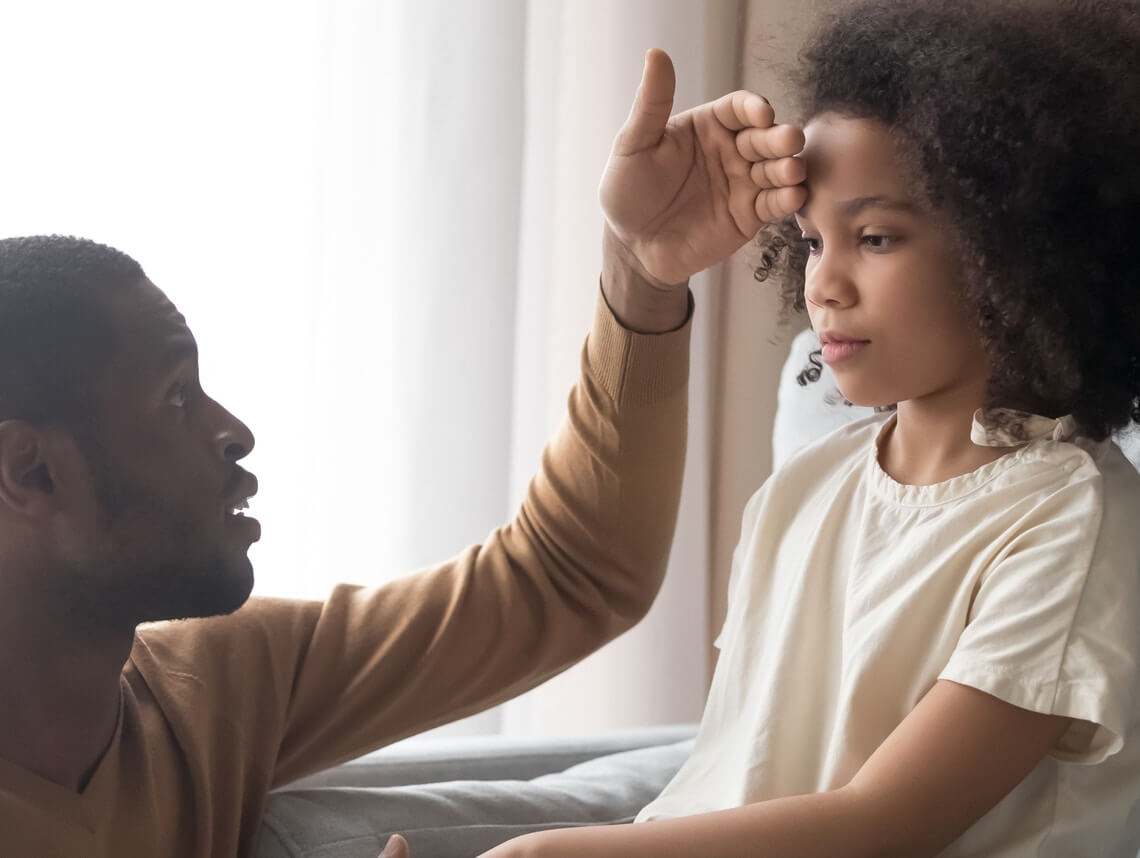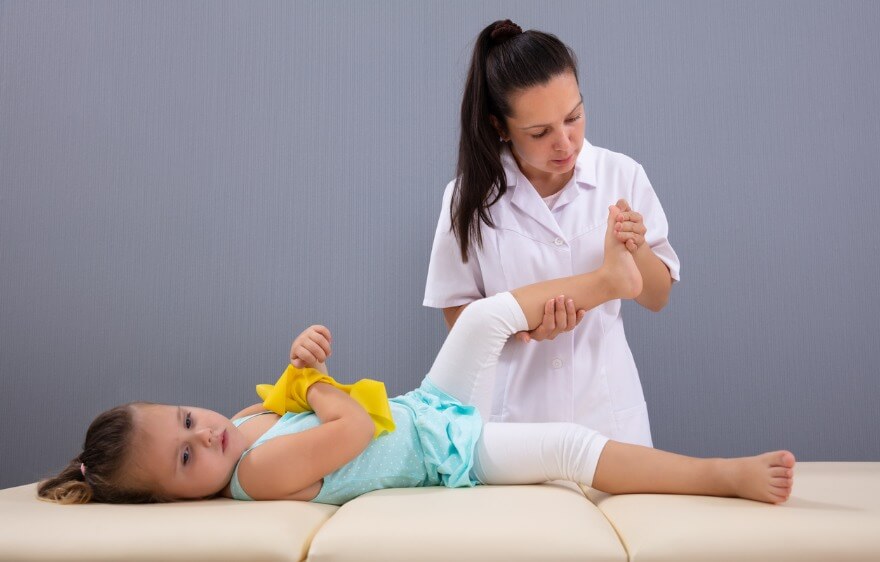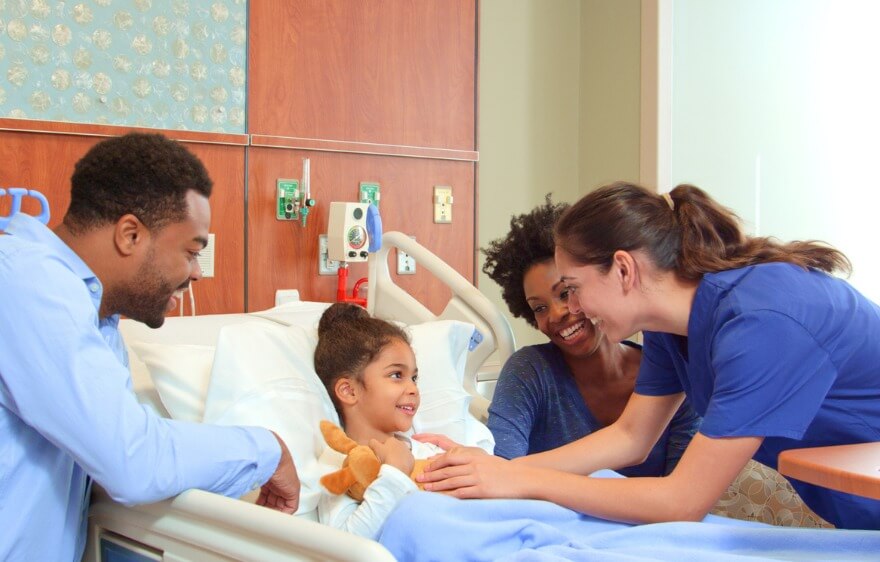If your child has been having respiratory issues, you may be understandably concerned about what it all could mean. With so many health ailments that affect the lungs and airways — such as bronchitis, asthma, or the common cold, to name a few — it may become overwhelming trying to figure out what’s causing the problems. So many conditions have similar symptoms, you may think it’s one thing today, and a different thing tomorrow. One of these serious conditions is pneumonia. What, exactly, is it? What causes it? What are the symptoms? And, how can you best care for a child with pneumonia?
What is Pneumonia?
Pneumonia is an infection of the lungs. It causes the air sacs inside these organs to fill up with pus and other fluids, causing inflammation of the lungs. In turn, your child ends up coughing up phlegm. If there is too much phlegm buildup, it can become difficult for a person to breathe. The condition can range from mild to severe, and it is most dangerous in young children, as well as those with a compromised immune system. In fact, pneumonia is one of the leading causes of hospitalization.
Causes of Pneumonia
Pneumonia is caused by different types of bacteria and viruses in the air. If your child has recently had a cold or flu, they are more likely to develop bacterial pneumonia from lingering microbes from those previous conditions. On the other hand, if your child has a chronic health condition that weakens their immune system, they are more susceptible to developing pneumonia caused by fungi that are typically found in spores in the air. In addition, certain types of viruses may develop into serious cases of pneumonia — such as COVID-19.
Pneumonia Symptoms in Children
Symptoms of pneumonia may vary from person to person. Some experience mild ones, while others experience disruptive, severe symptoms. The most common symptoms include:
- Stuffy nose
- Sore throat
- Coughing with phlegm
- Chest pain when coughing
- Belly pain
- Shortness of breath
- Fever
- Sweating
- Chills
- Fatigue
- Loss of appetite
- Nausea
- Vomiting
- Diarrhea
In addition, how often the symptoms appear depends on the type of pneumonia a child is experiencing. Kids with bacterial pneumonia tend to become sick quickly, with a sudden onset of symptoms. On the other hand, kids with viral pneumonia experience less severe symptoms that appear gradually.
When to See a Doctor if Your Child Has Pneumonia
See a doctor immediately if your child is younger than two years of age, has a weakened immune system, or has a fever of 102 or higher — or if a fever has lasted for a few days. Failing to do so could lead to life-threatening complications, such as bacteria in the bloodstream, pus-filled abscesses in the lungs, or accumulation of fluid in the lungs. If your child suffers from a chronic lung condition, pneumonia could result in hospitalization and the need for a ventilator.
Caring for a Child with Pneumonia
There are several things you and your family can do at home to help take care of a child with pneumonia. They range from home remedies to pharmaceuticals.
1. Give Them Antibiotics
If your child has bacterial pneumonia, their pediatrician will prescribe antibiotics. Monitor your child to see the effect of the medication on your child. If symptoms improve, continue administering the antibiotics per the doctor’s instructions until the bottle is empty. If your child is failing to obtain relief, let the doctor know so they can recommend a different medication.
2. Keep Your Child Hydrated
Give your child plenty of fluids throughout the day and monitor their urine. You’ll know they’re staying hydrated if their urine is light yellow or clear. Also, pay attention to signs that your child may need more water — such as having a dry mouth, sunken eyes, or a lack of energy. If your child has been vomiting or has diarrhea, give them an electrolyte drink, such as Pedialyte to replace lost fluids and minerals.
3. Prioritize Rest
Getting plenty of rest is essential to ensure your child recovers. Give your child plenty of books and their favorite movies, because it might take several weeks for their lungs to fully recover from the inflammation. Bed rest is also important to avoid complications. Always keep a glass of water within easy reach from your child to prevent them from having to get up and walk to another room in your home if they’re thirsty.
4. Use a Humidifier
Breathing moist air will help loosen up the mucus accumulated in your child’s lungs. It will also make it easier for your child to breathe. Keep a machine in their room and follow instructions to keep it clean. If you do not have a humidifier, you can give your child regular warm baths.
5. Wash Your Hands
Wash your hands regularly throughout the day with soap for at least 30 seconds each time. Have everyone in your household and any additional caregivers do the same. This will help prevent the spread of additional bacteria that may affect your child’s health. By the same token, sanitize nearby surfaces. Such a simple task protects one out of every five young children with respiratory infections from developing complications.
Contact Care Options for Kids for Home Health Care
It can be hard to balance your time between work, home, and caring for a child. That’s why our team of skilled professionals at Care Options for Kids is here to help. We have been enforcing precautionary measures and following the Center For Disease Control (CDC) guidelines for COVID-19 to ensure the safety and health, for our clients and employees.
Our home care services offer support in the comfort of your home. We refer loving and competent nurses to provide customized care for families — from a few hours a day to around-the-clock supervision. Contact us directly to speak with a home health care professional or request a free in-home assessment. Together we can determine the best plan of action to keep your loved ones happy and healthy.
If you or a loved one are considering Pediatric Home Health Care Services, contact the caring staff at Care Options for Kids. Call today at (888) 592-5855.






